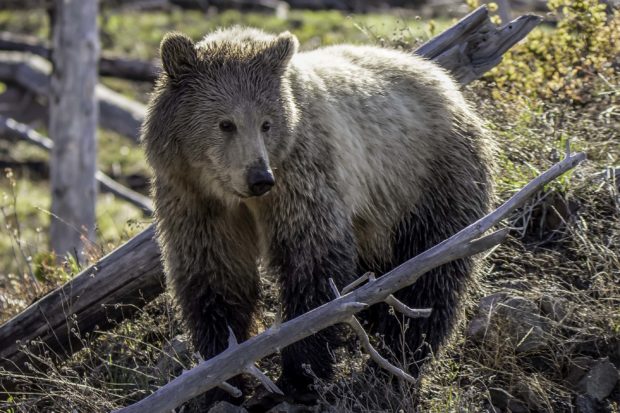
In study after study, qualified biologists have expressed their alarm about hunting and predator control of large carnivores like bears. Above, Snow, a bear who lives in Yellowstone. Photo by Wendy Keefover/The HSUS
Less than 24 hours after a court order restored Endangered Species Act protections for Greater Yellowstone Ecosystem grizzly bears, the mischief in Washington, D.C. has begun again. The ink was hardly dry on Judge Dana Christensen’s order before Congresswoman Liz Cheney, R-Wyo., last night advanced a measure to remove federal ESA protections for grizzly bears, and bar citizens from filing lawsuits to challenge this action, regardless of the threats that face the population.
Rep. Cheney’s measure, a proposed amendment to an existing bill that would delist wolves, has since been deemed not relevant and will not be added as an amendment to the bill. However, Congress still needs to hear from citizens who understand that this is no way to conduct the nation’s business.
Why the rush by Congress to delist America’s most famous bears and its wolves too? It’s a matter of pure and simple political pressure from trophy hunting, shooting and ranching interests.
The bears of the Northern Rocky Mountains are in trouble even without a trophy hunt. Because of food shortages within the Glacier, Yellowstone and Grand Teton national parks, more bears are crossing park boundaries to scour for food for survival, and that puts them directly in the crosshairs of elk hunters and ranchers. And it’s late fall, so the problem is especially acute. All bears– be they black or brown — need to gain huge amounts of weight each and every day during the late summer and fall so they can survive wintertime hibernation, during which they are dependent solely upon their body fat for survival.
This is also the time of year when most incidents of human-grizzly-bear conflicts occur, like predation of unsecured livestock and irresponsible elk hunters in the field who use deadly force instead of pepper spray during bear encounters. Tragically, since January 2015, an unprecedented 223 Yellowstone-area grizzly bears have perished, and most from human causes.
As Judge Christensen noted in his Monday evening order, Yellowstone-area grizzly bears have not reached recovery level, not least because they remain genetically isolated from all other populations of bears in the lower 48 states. Despite 50 years of monitoring, not one single bear has entered the Yellowstone Ecosystem from the Glacier population, the next nearest population.
In study after study, qualified biologists have expressed their alarm about hunting and predator control on large carnivores like bears. I’ve been thinking about this a lot since the news came out earlier this summer about the father and son who killed a mother bear in her den in Alaska, and it’s shocking to me that anyone would want to hunt bears. Bears may be the most sentient of any large carnivore. Mother bears are endlessly patient with their cubs, with whom they form strong bonds. A mother grizzly bear can spend up to four years with her cubs.
We need your help urgently to stop this threat. It is crucial that you call you U.S. Representative immediately and tell them that you want wolves and grizzly bears protected under the Endangered Species Act.
Enviroshop is maintained by dedicated NetSys Interactive Inc. owners & employees who generously contribute their time to maintenance & editing, web design, custom programming, & website hosting for Enviroshop.
